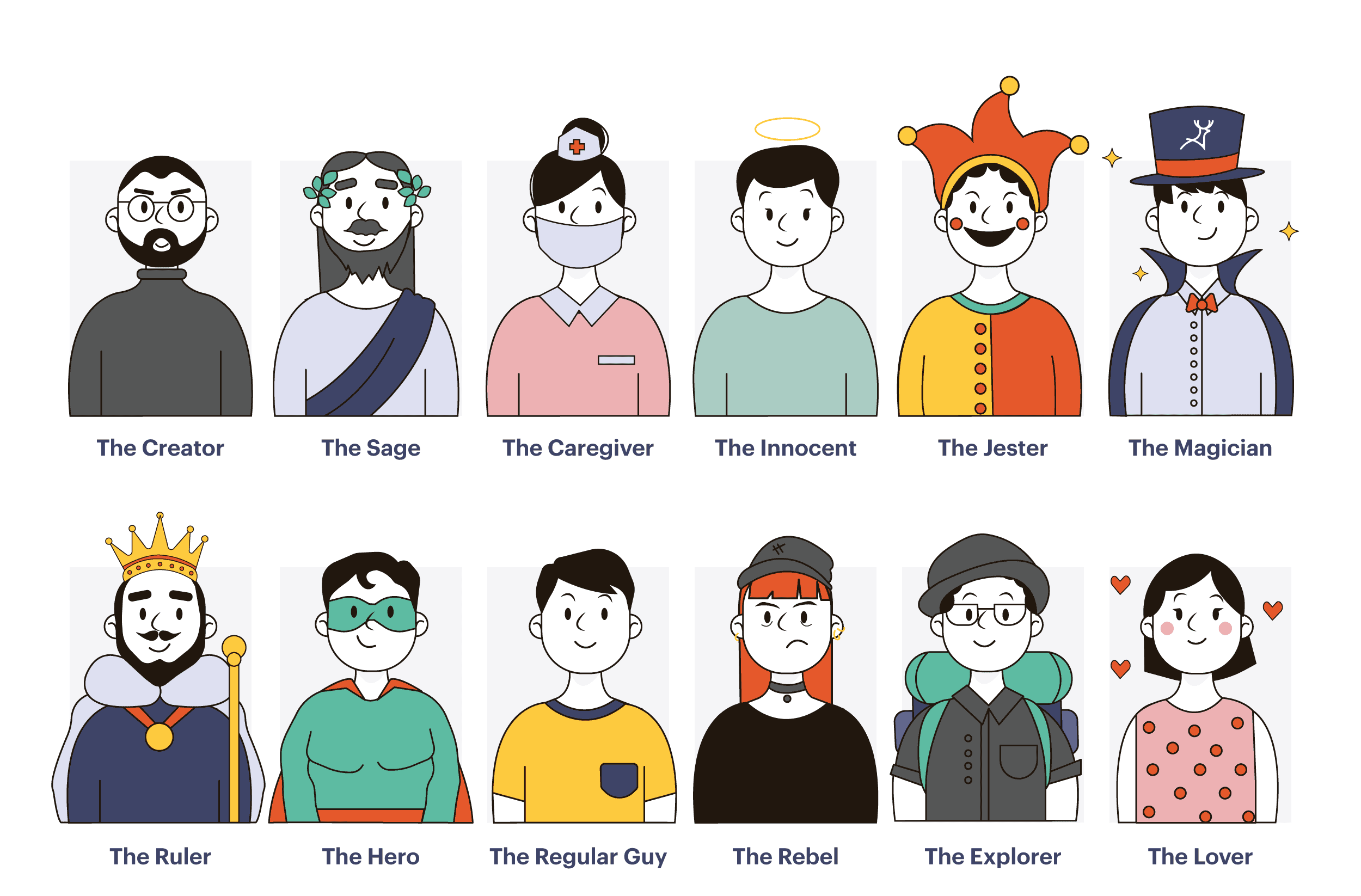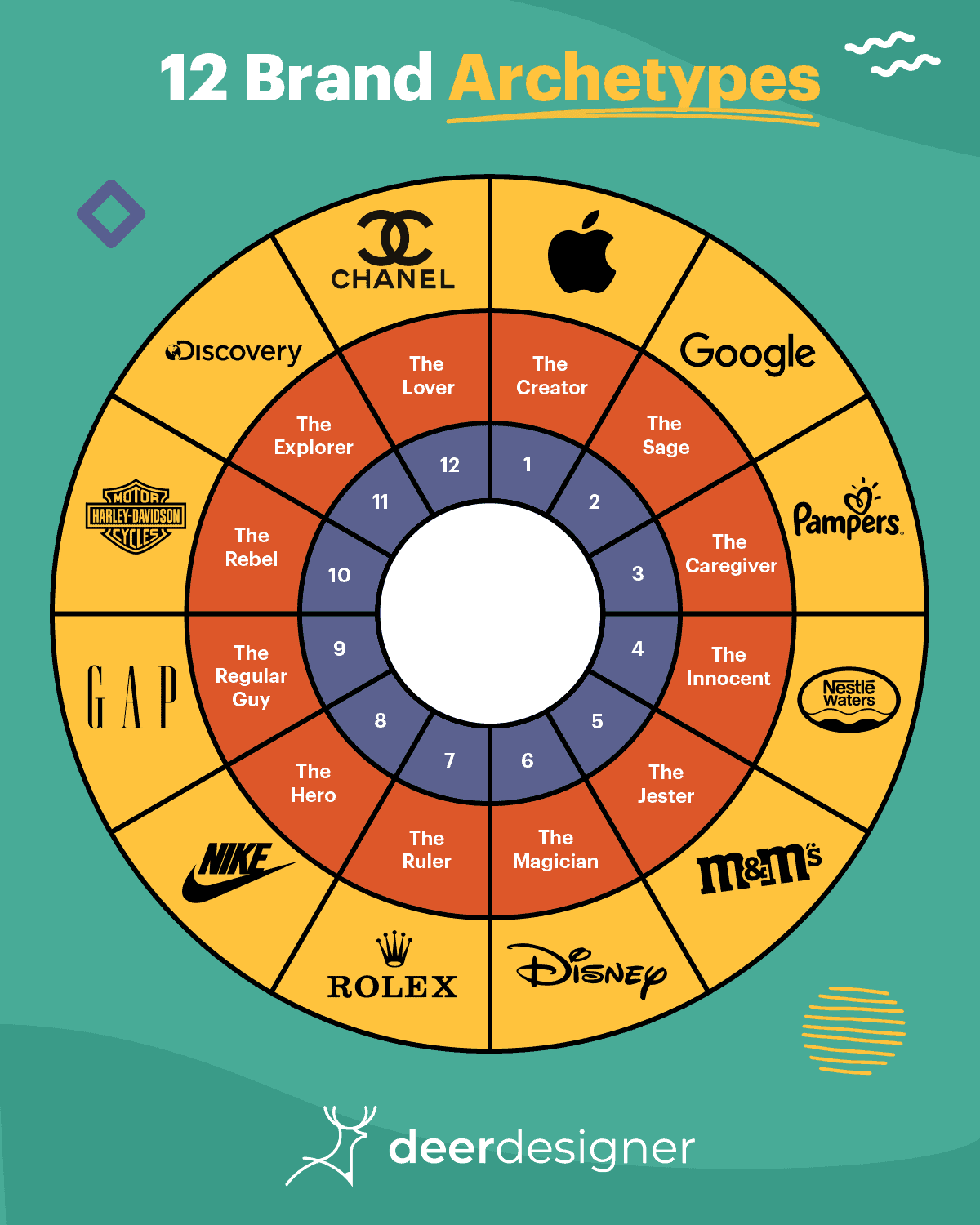Represent! 12 Brand Archetypes to choose for your business
Do you ever wonder why people pay more for a Starbucks latte even though it tastes the same or even worse than other coffee brands? The answer is easy to figure out: branding.
Starbucks has spent a lot of time and money on building its brand and giving value to its customers. In this process, a brand archetype plays an important role.
A brand archetype is a character or situation that is known by everyone, regardless of time, place, culture, gender, or age. A brand is given an archetype so that it seems more real or familiar to customers.
After reading this article, you’ll be able to figure out “what kind of person” your business is. You can also use it to see if your marketing campaigns are working or if they need to be changed.
Archetypes humanize brands
The 12 brand archetypes we know today came from Carl Jung’s personality archetypes, which were first described in 1919.
Archetypes are based on human psychology and affect how we act, making our actions seem familiar and easy to predict.
Creator
The Creator archetype uses creativity to solve problems, which often leads to new products or services.
Its goal is to change people’s lives by being creative and coming up with new ideas. One well-known example is Steve Jobs, who started the tech giant Apple.
Sage
Sage is looking for the truth so it can understand things better. It gives intelligence and wisdom a lot of weight. Google is known for this brand archetype because it gives people useful information.
Caregiver
The Caregiver shows a character who is caring and nurturing. This archetype is linked to products and services that make daily life easier.
These are commonly used by products or services for babies, children or the elderly, like Pampers or UNICEF, which is a charity and health organization.
Innocent
The Innocent archetype is someone who thinks that doing the right thing will make other people happy.
It has a positive view of the world, which makes it a brand that gives everyone joy. It is known for being simple and useful, like the well-known FMCG brand Nestlé.
Jester
The Jester loves to have fun and amuse people. It likes to make the world a little bit better while keeping a lighthearted tone. M&M is a good example of this.
Explorer
The Explorer archetype wants to try new things and be on its own. People usually think of hiking, triathlon, and exploring when they hear this word. Discovery Channel and the car brand Jeep are both great examples.
Lover
The Lover wants to be close and feel connected. It thinks that love keeps the world going ‘round. It is used by brands that are sensual and tempting. Some examples of high-end bag brands with this archetype are Chanel and Dior.
Magician
Everyone hopes that their dreams will come true. The Magician changes things and makes a unique experience.
Since we were kids, we all know that Disney has given us this kind of experience. The magician’s life’s mission is to make the impossible happen.
Ruler
The ruler is strong and harsh, but that’s how they get things done. Even though the leader’s way of doing things is controlled, it aims to be elegant and special. Rolex is one such brand.
The Regular Guy
The archetype of the Regular Guy is practical and fair. It is honest and down-to-earth, and it wants to fit in. It encourages people from all walks of life to get along with each other. One great example is Gap.
Rebel
Rebel is a term for someone who wants to start a change by taking risks. The rebel archetype goes against the rules by shaking up the status quo and doing things in a different way. It is known because of companies like Harley-Davidson Motorcycles.
Hero
In movies, heroes are strong, brave, and a source of inspiration. In business, the hero archetype also wants to inspire and motivate people in any way possible. Like Nike, the hero is a symbol of success through hard work.
The archetype chooses the brand
You might be thinking, “Oh, my business does web design, so I’ll choose the Creator archetype”. Don’t pick one because a famous person has it or because it sounds like your business. Without giving it much thought, you just stereotyped your brand.
The brand doesn’t choose the archetype: the archetype chooses the brand.
A common mistake is trying to force a brand’s founder, employees, products, and services to fit an archetype when they can’t.
After a few years in the business, you’ll have a good understanding of your company’s culture and know which archetype it fits into best.




